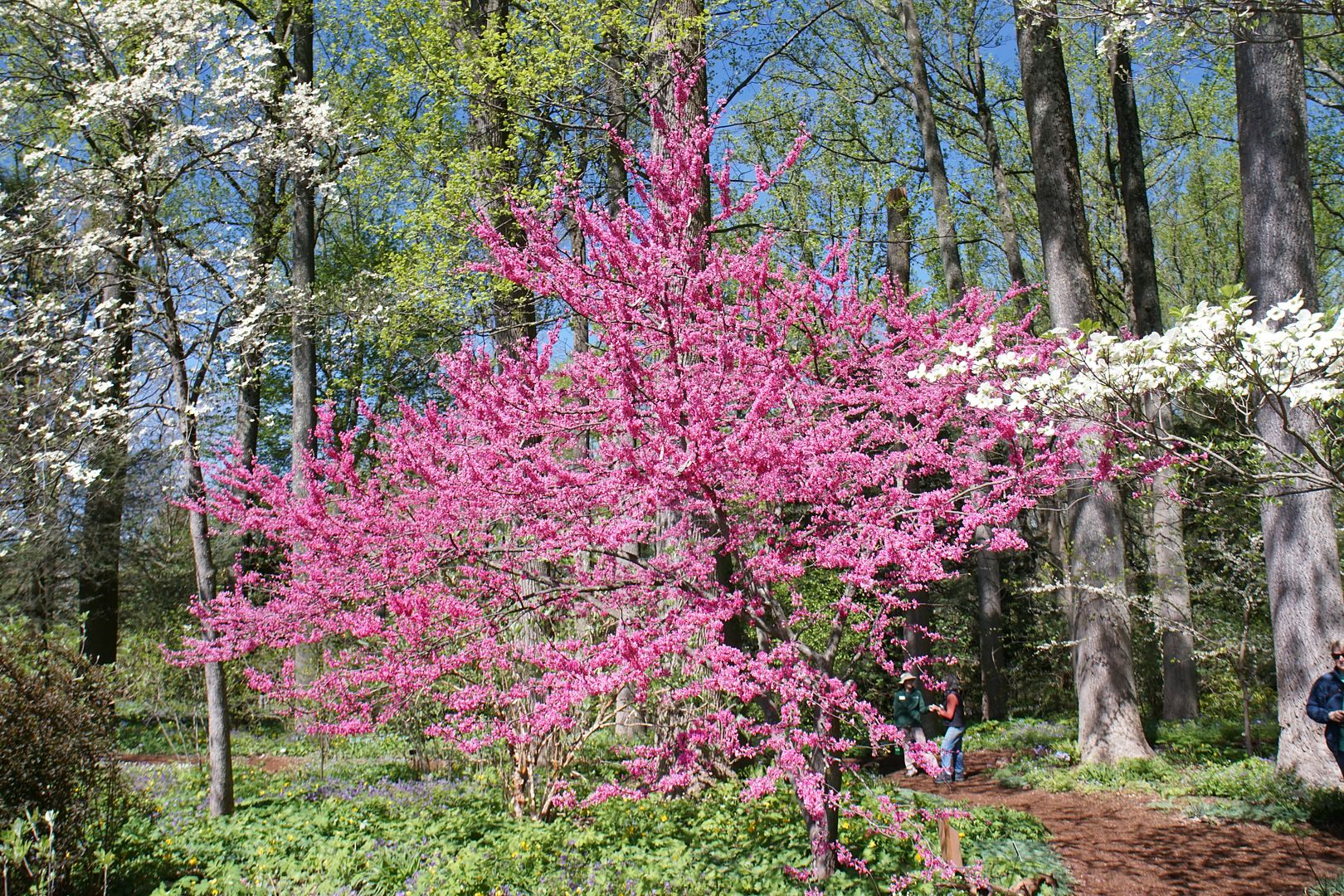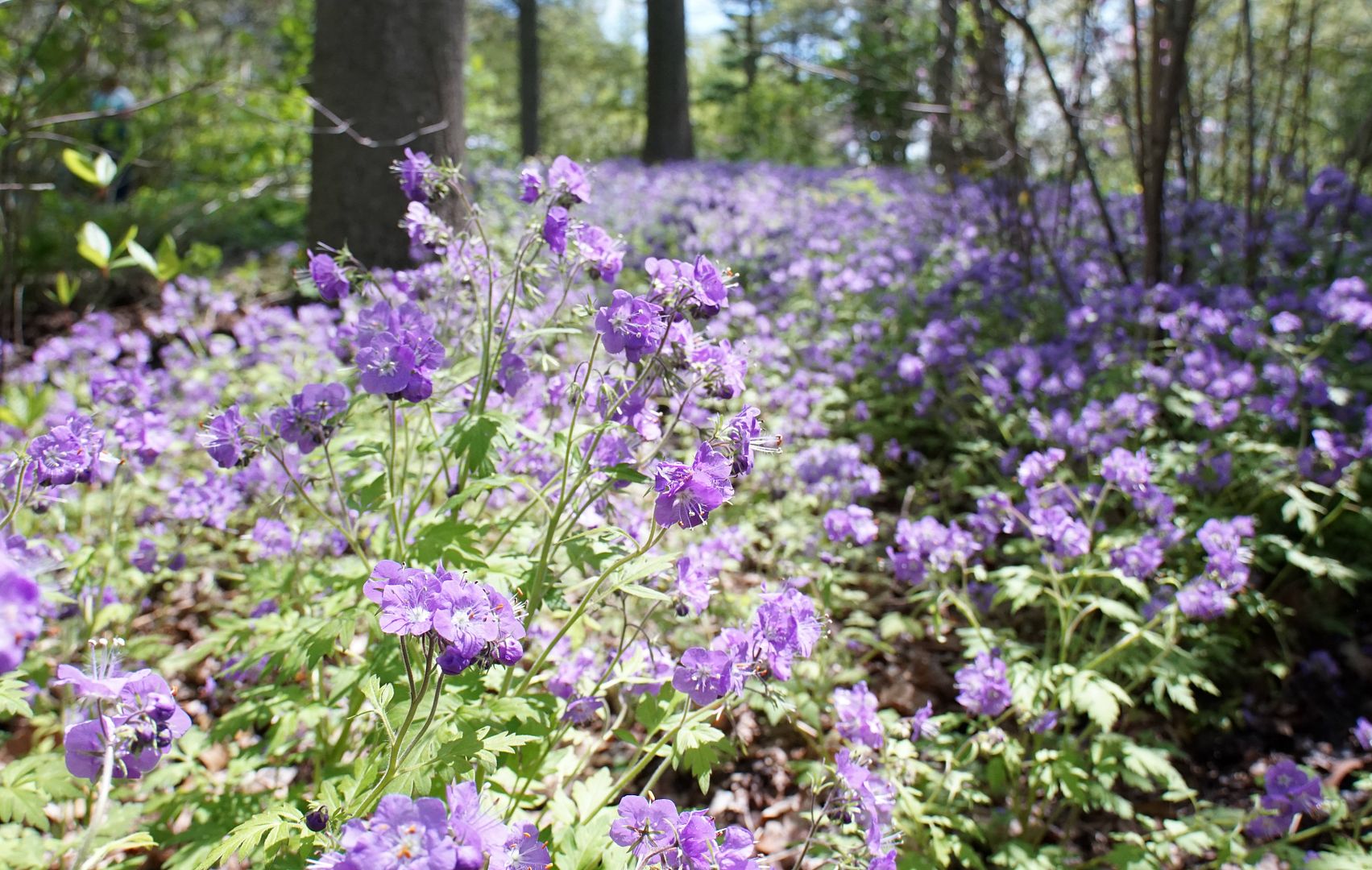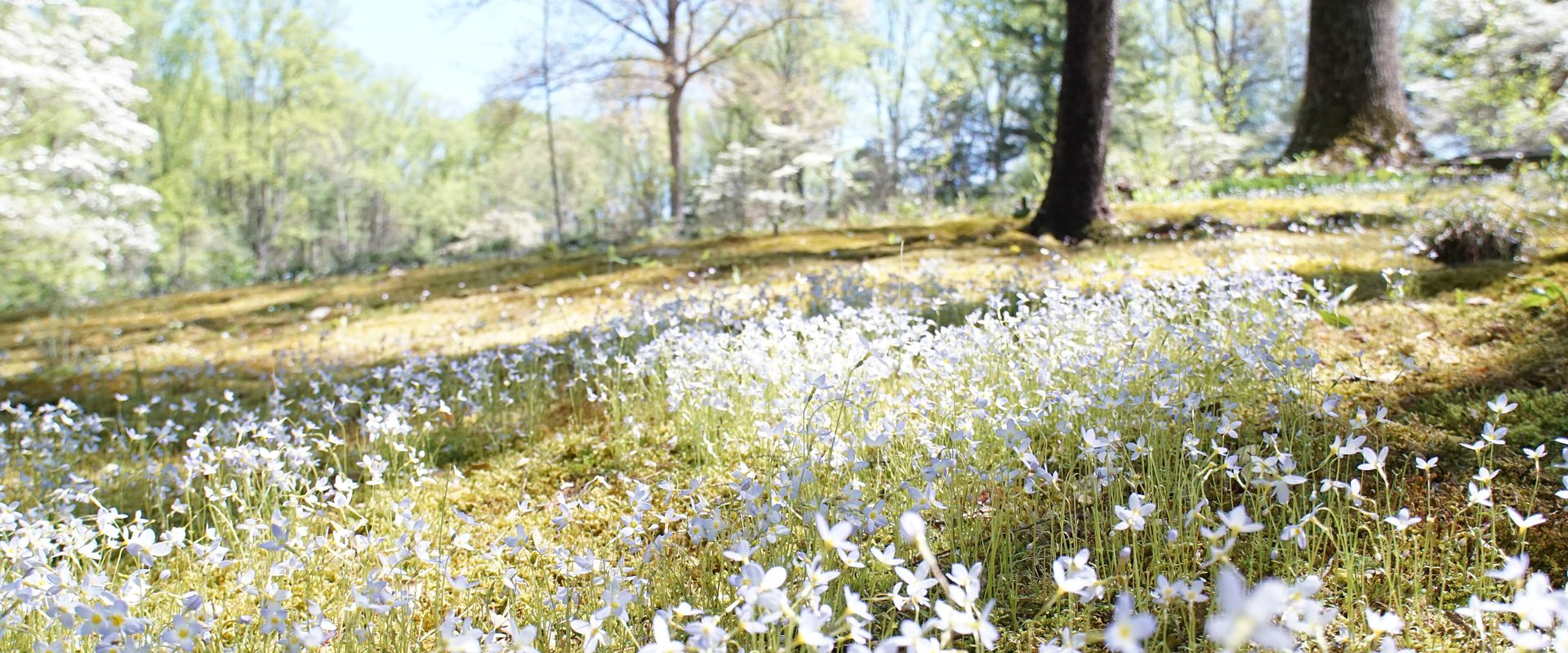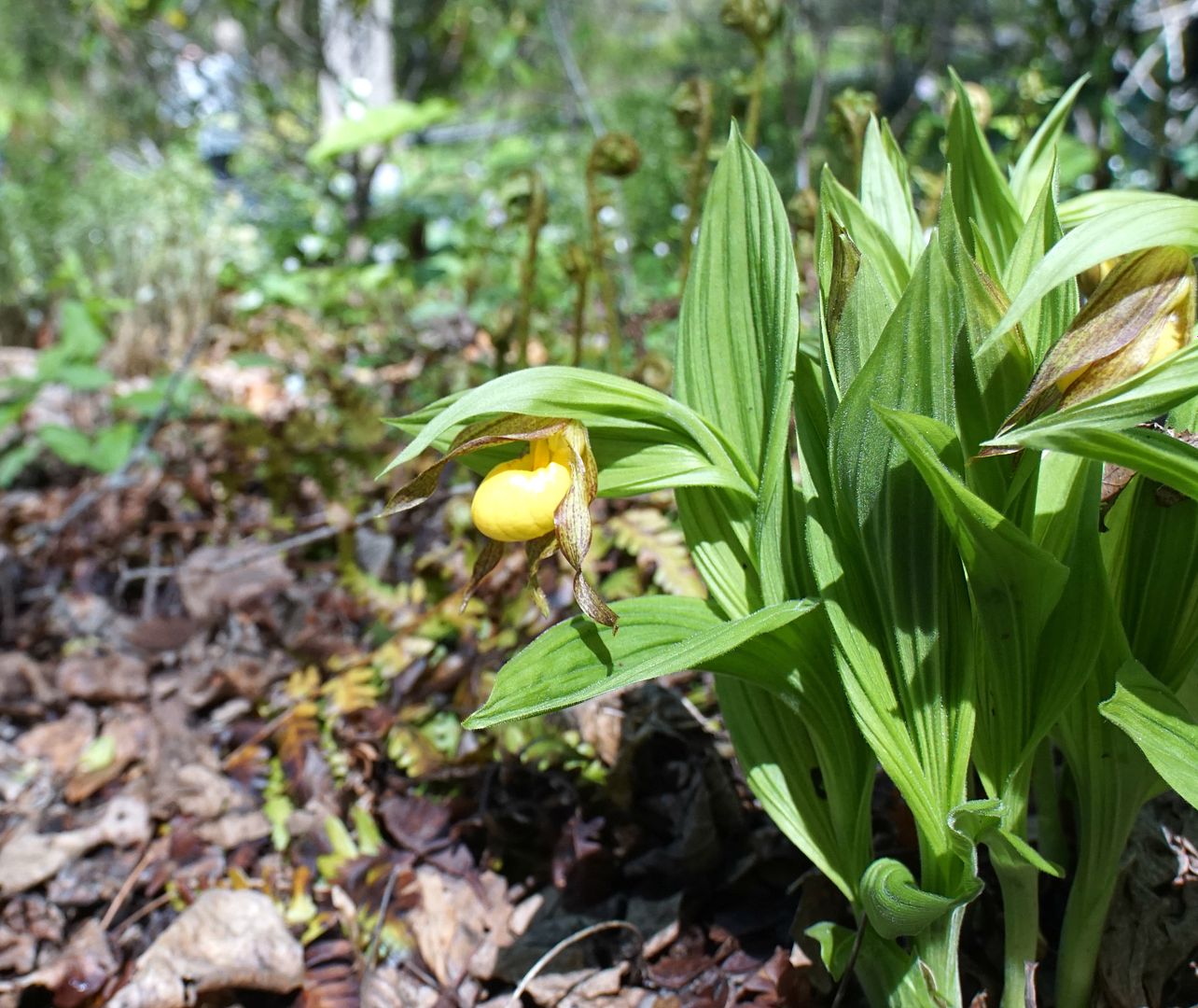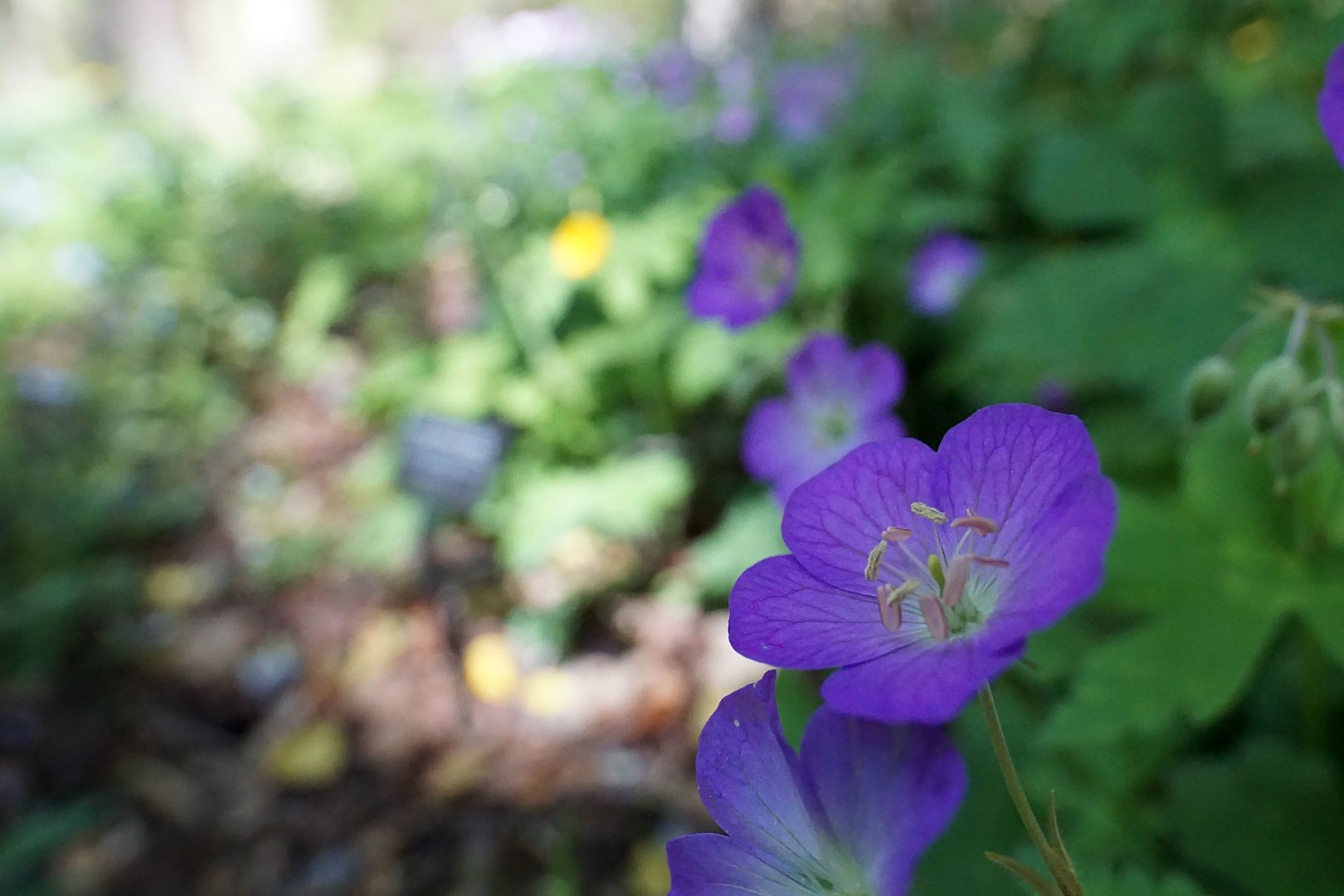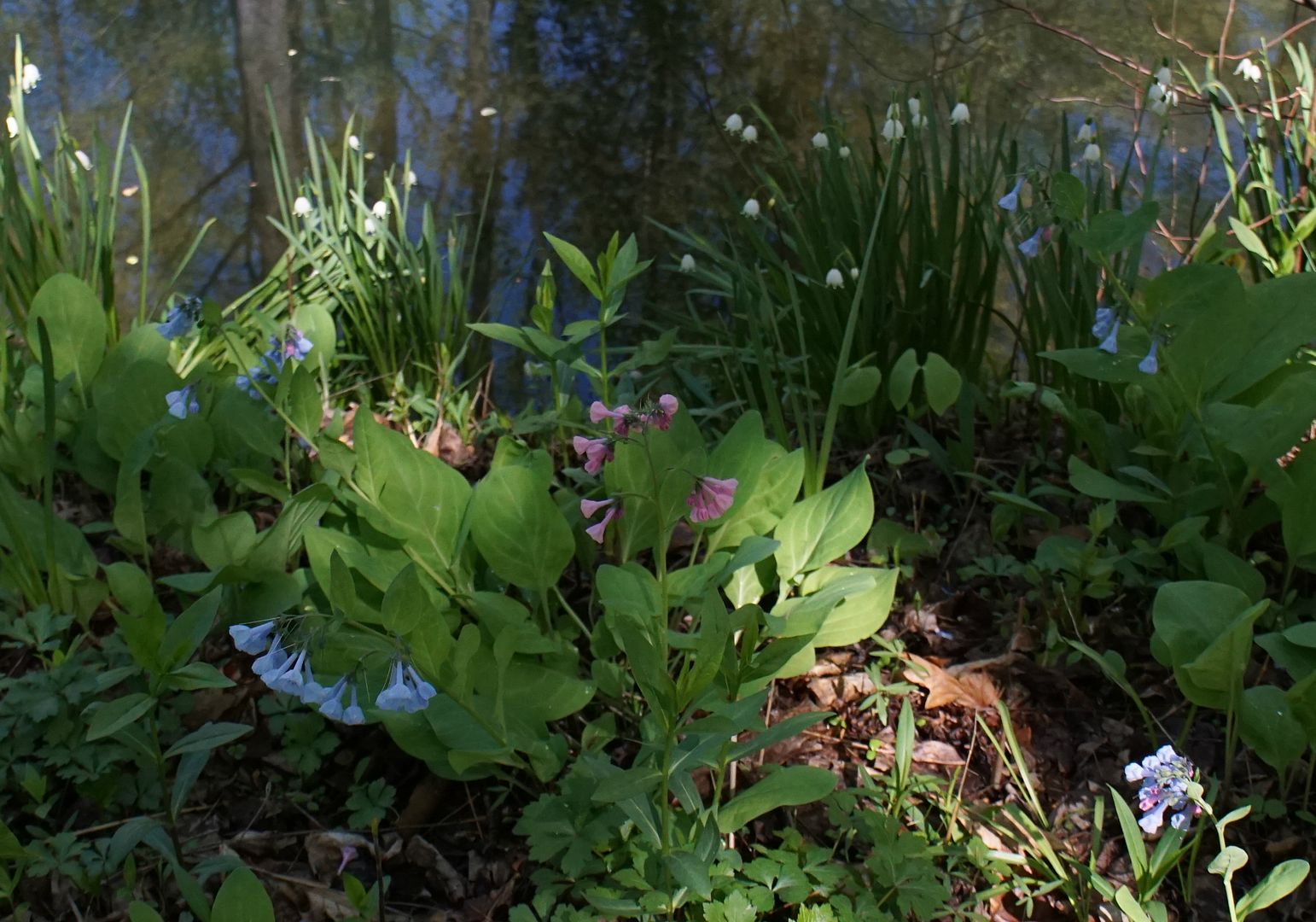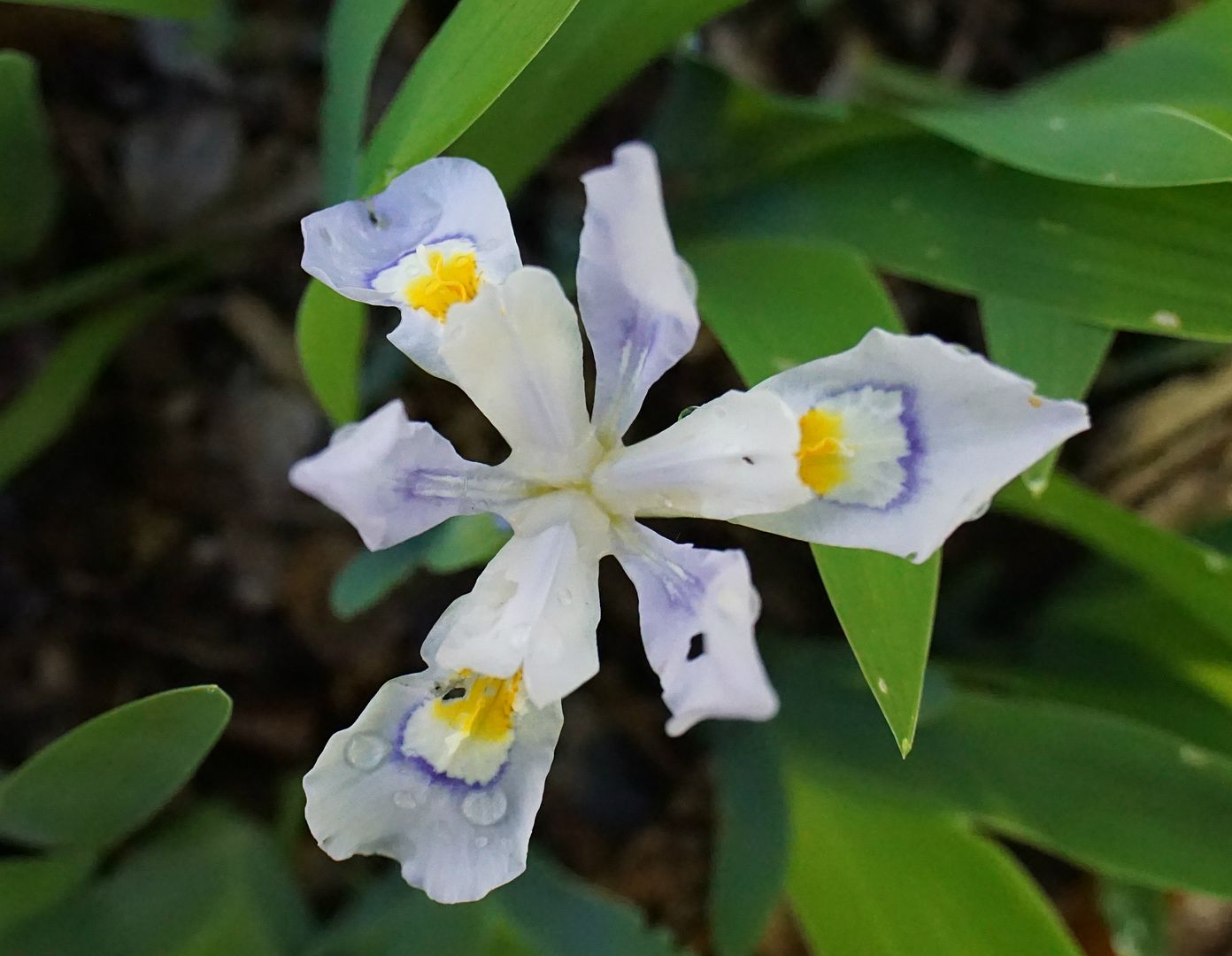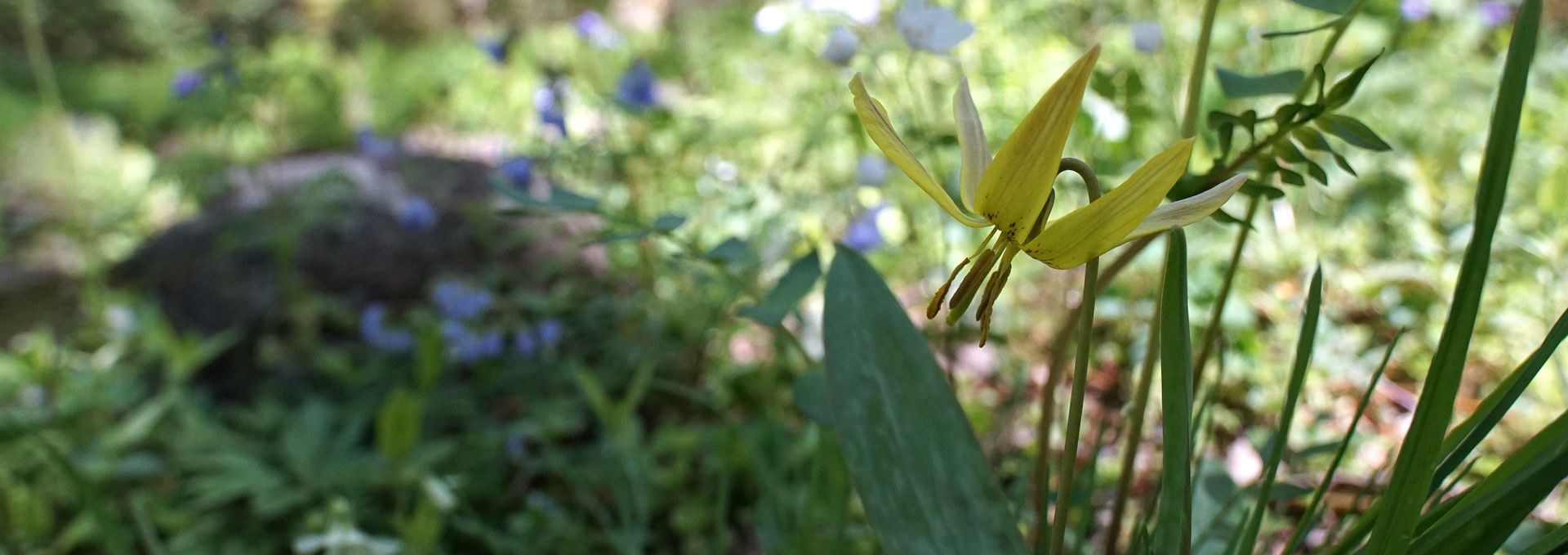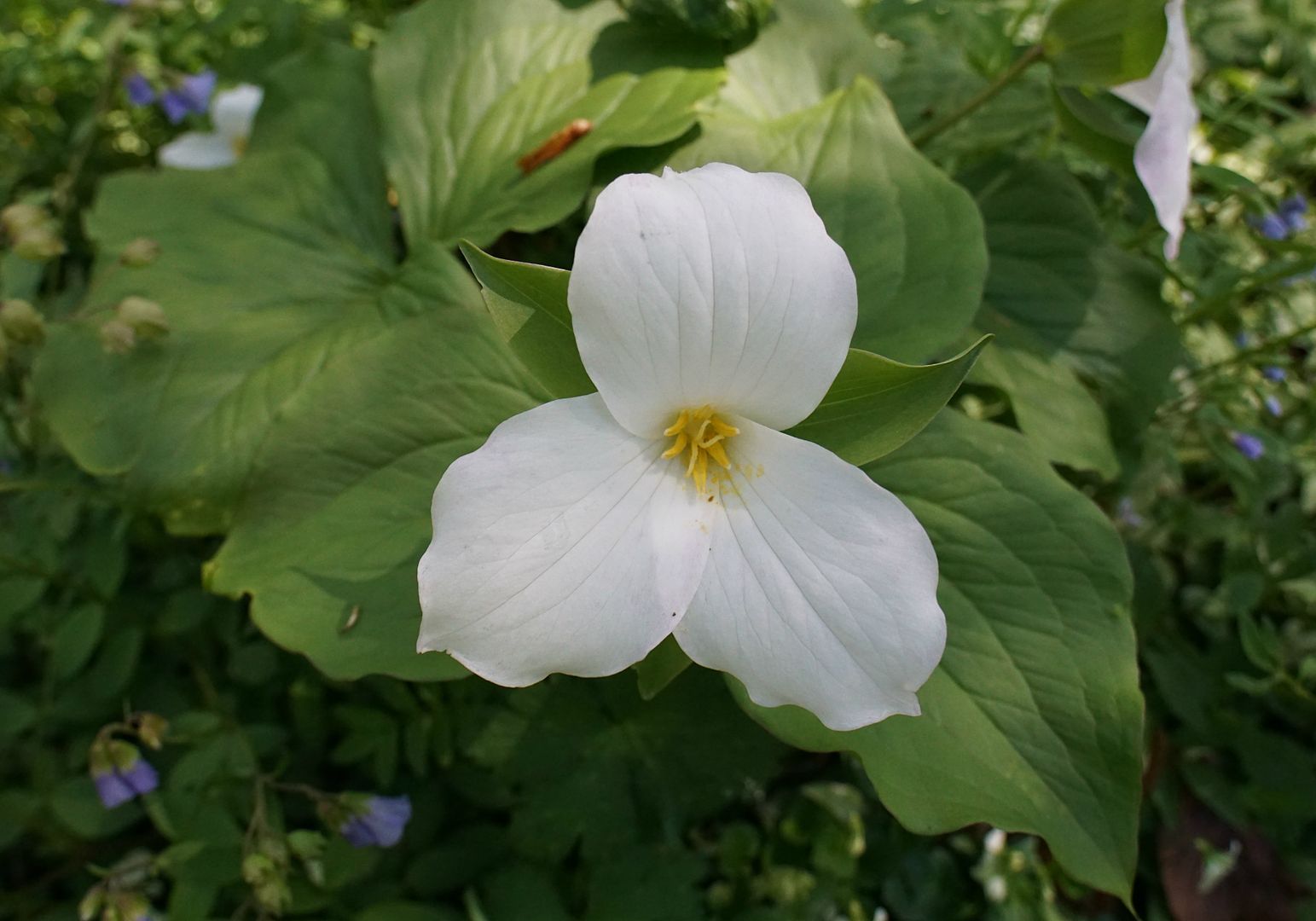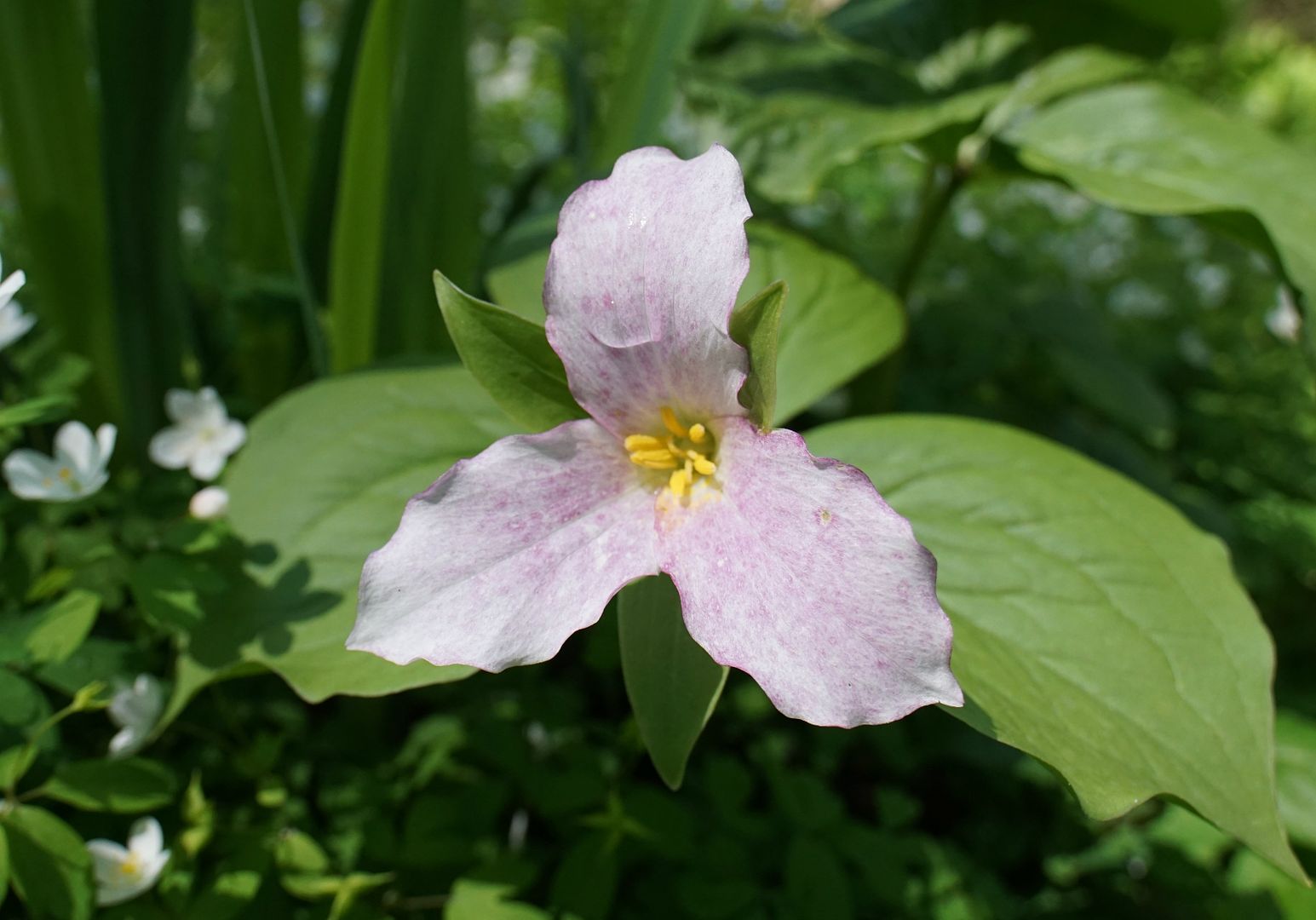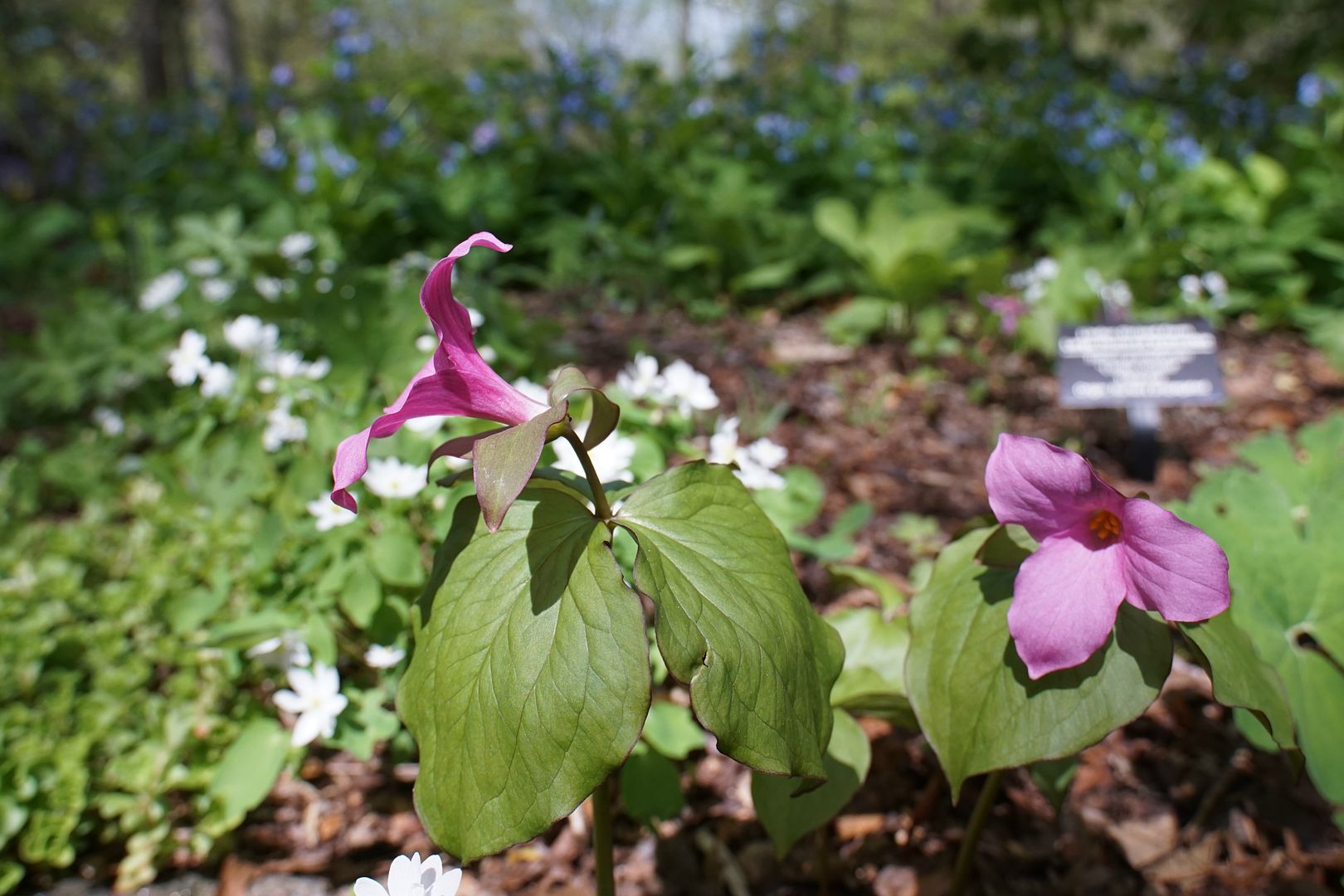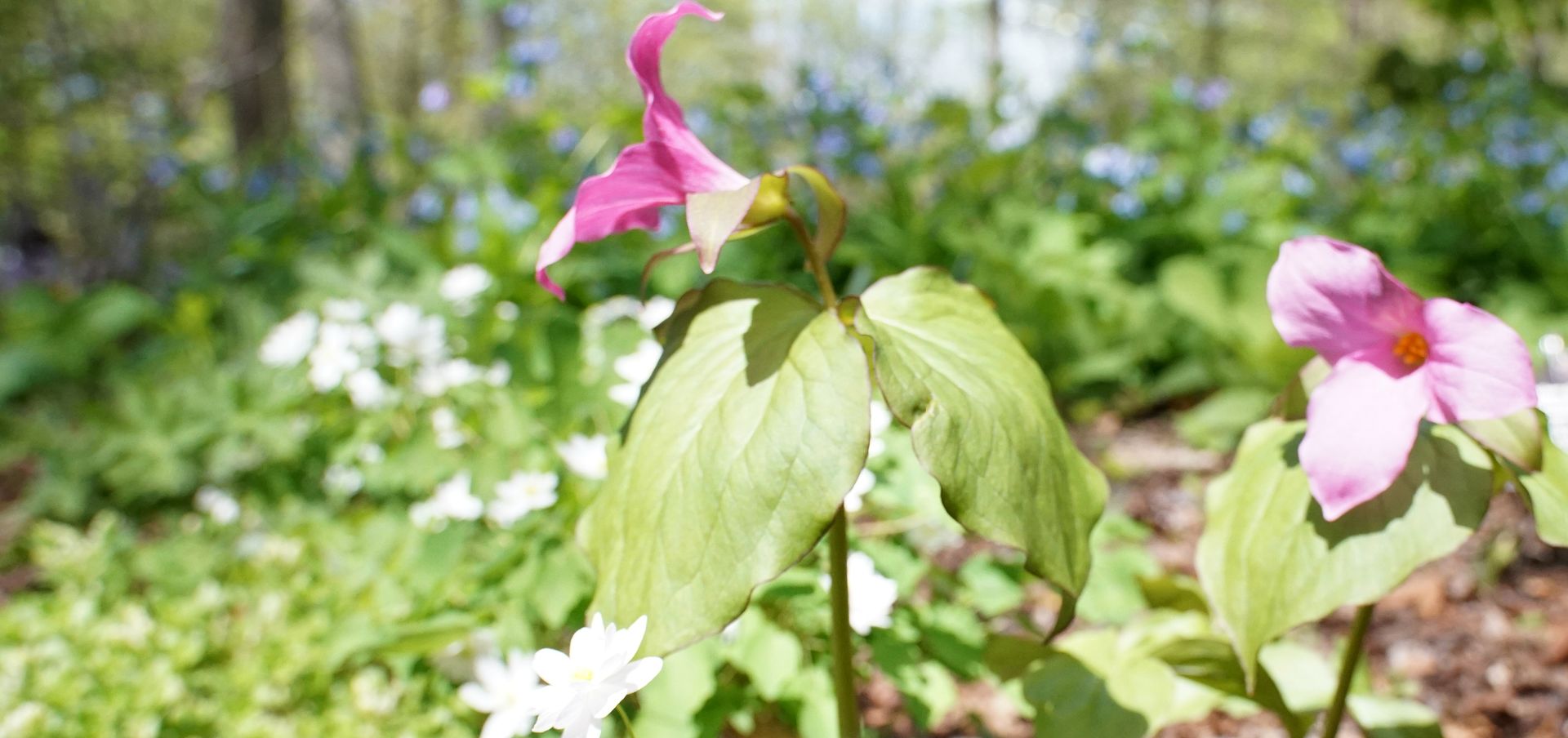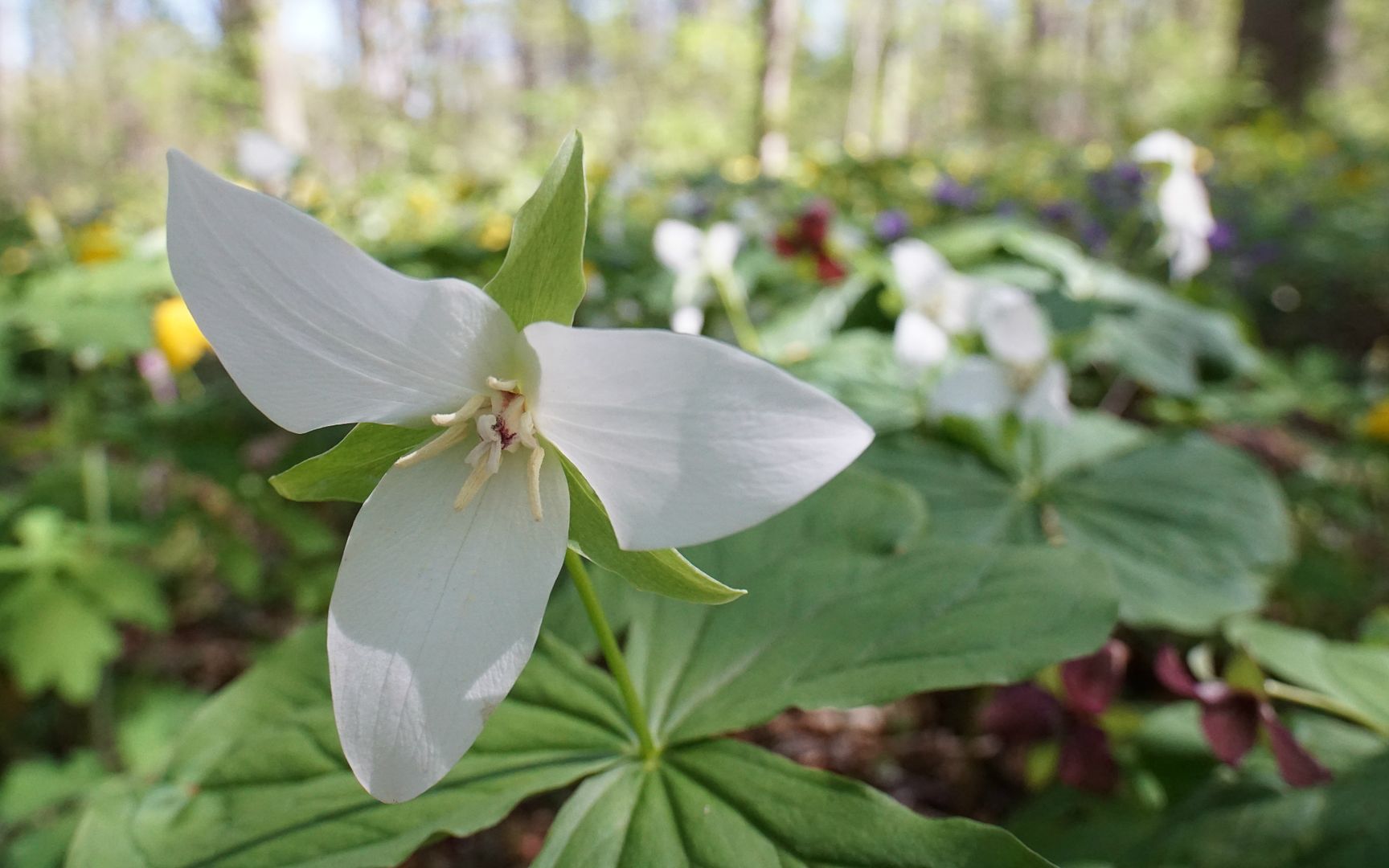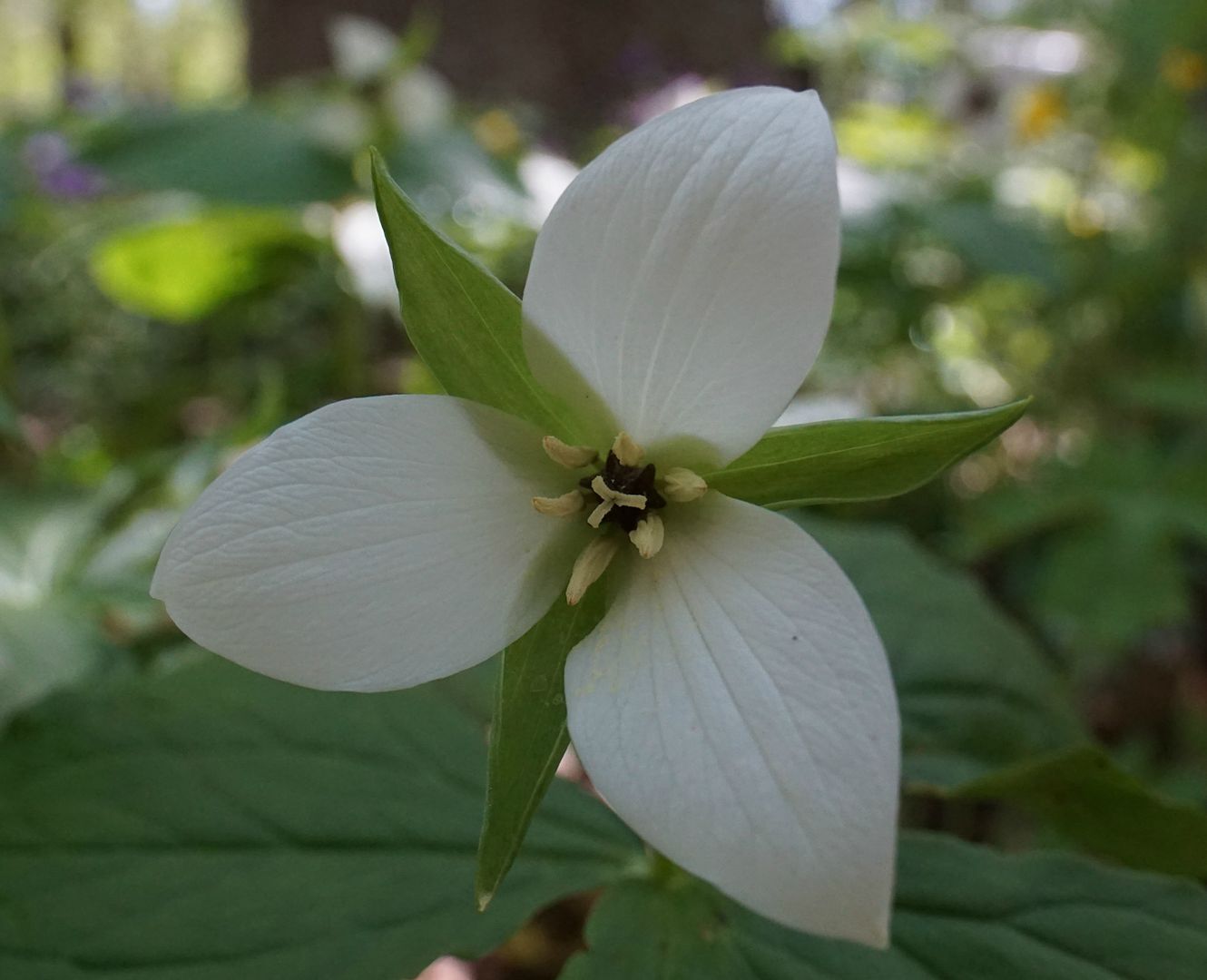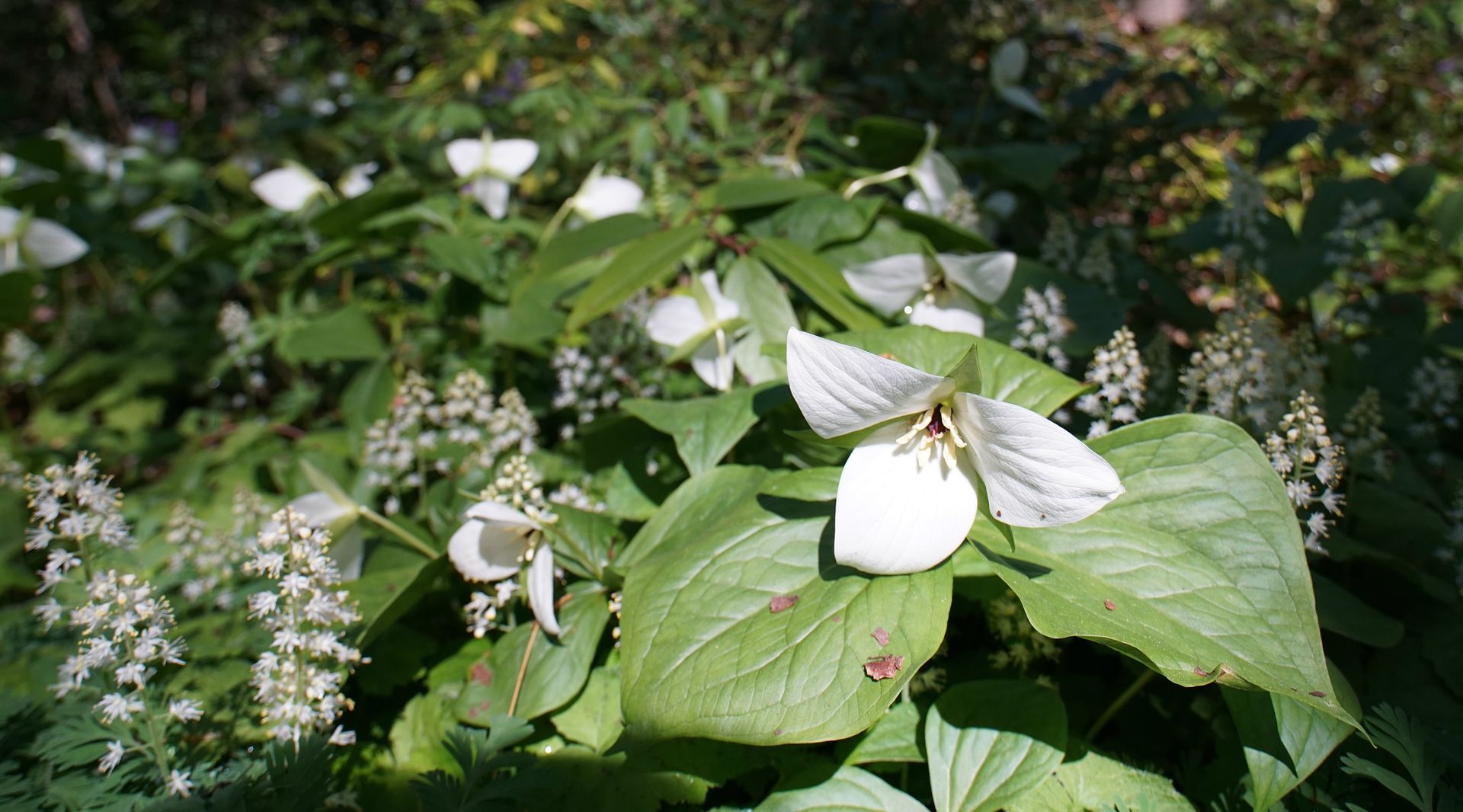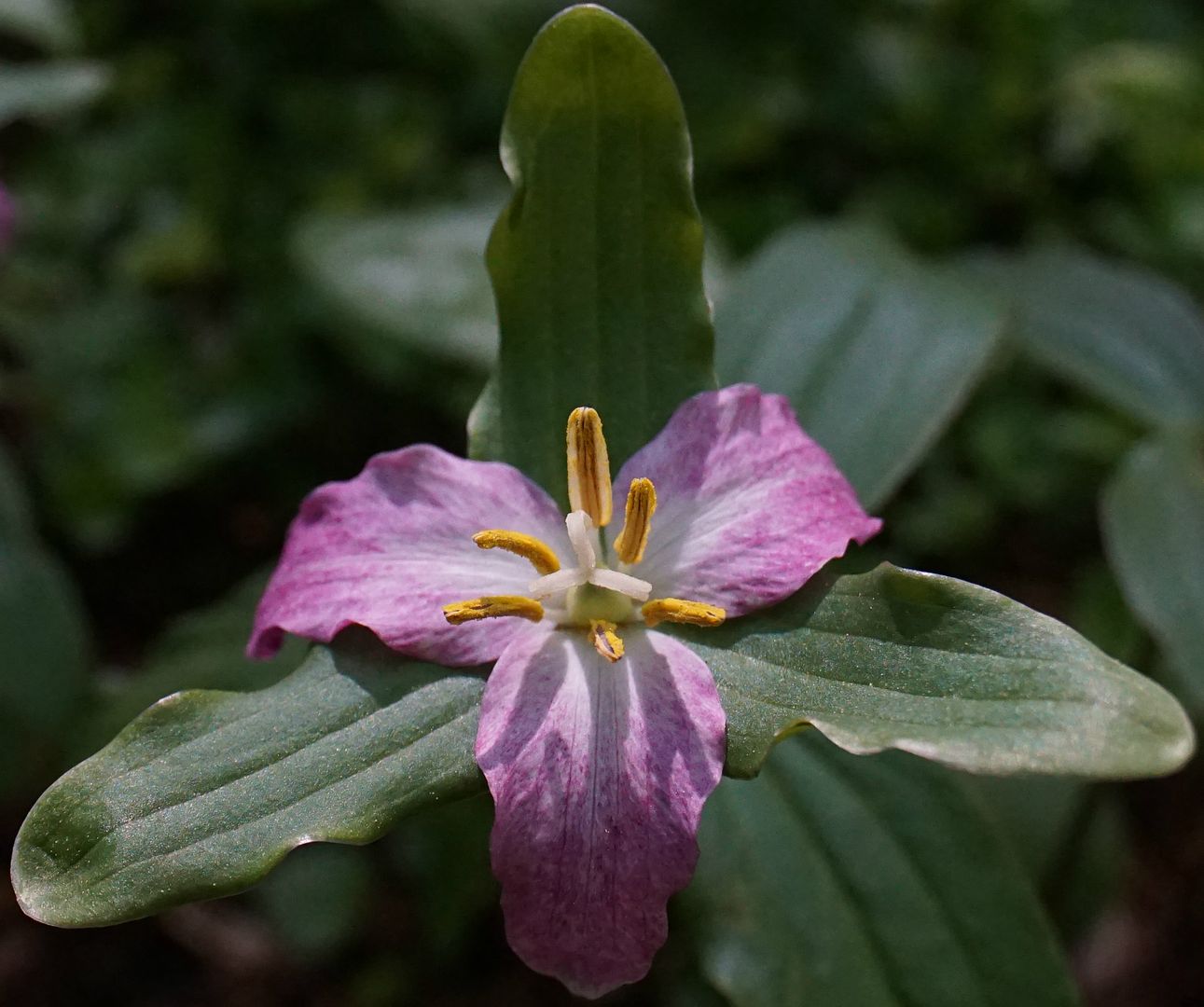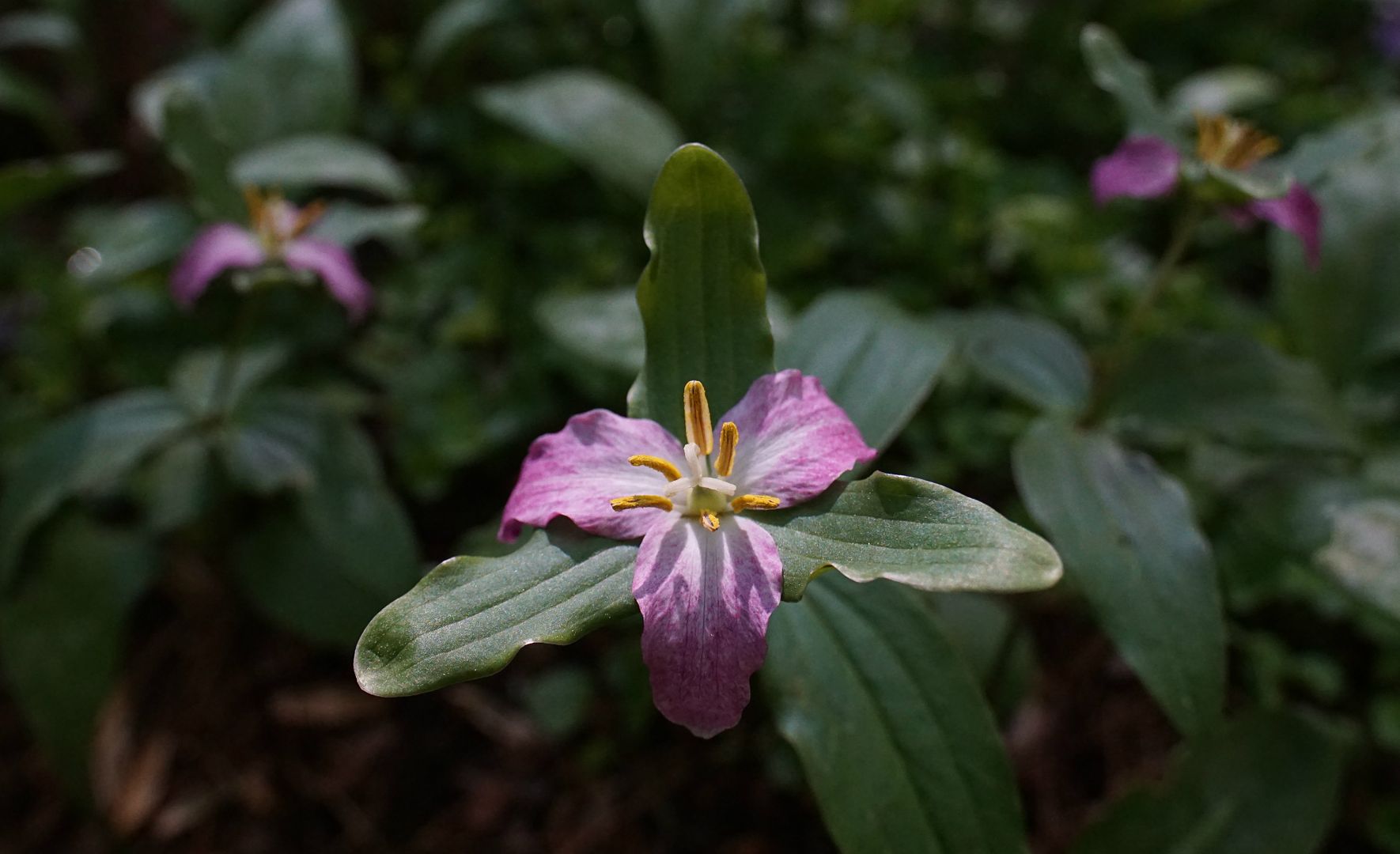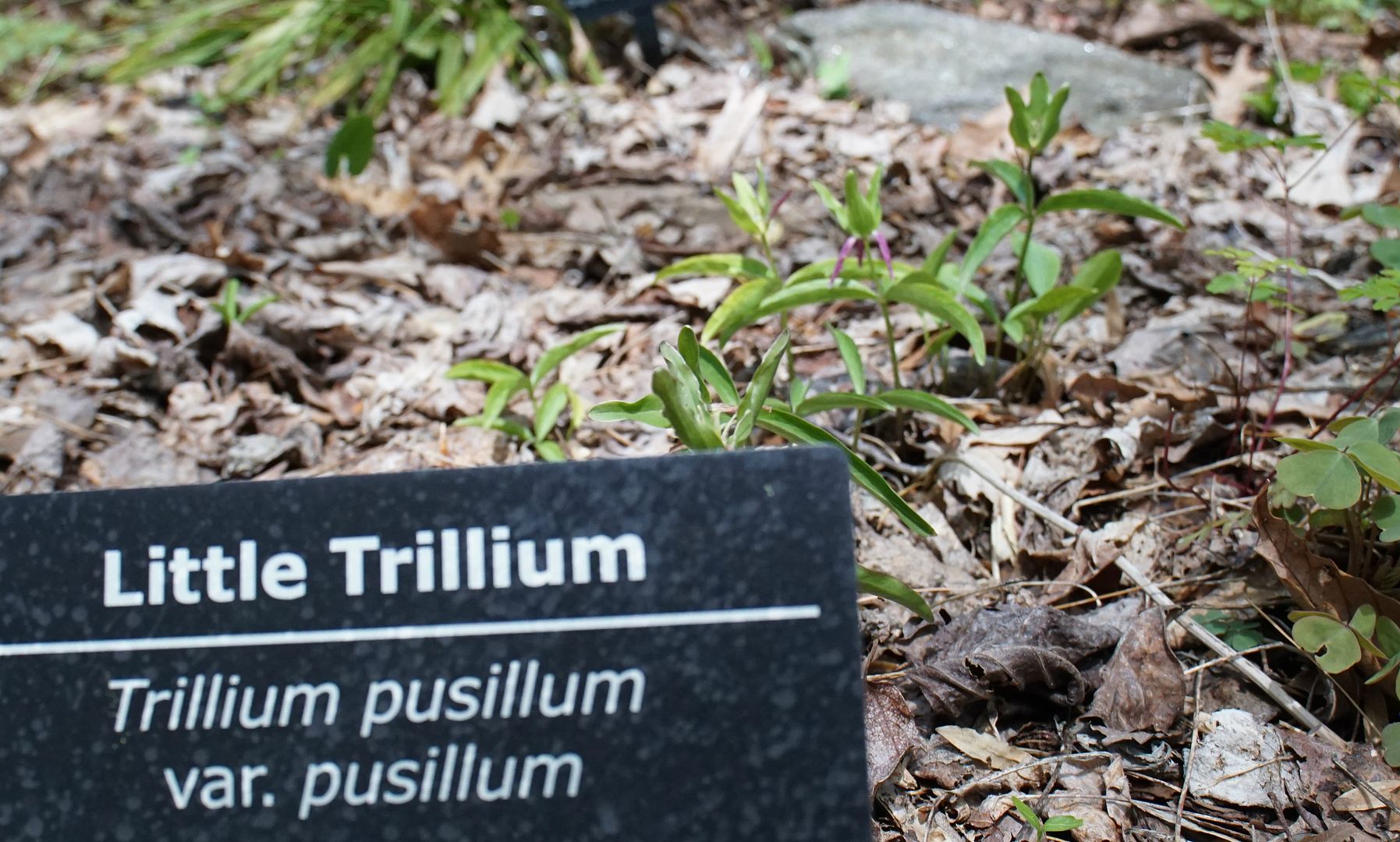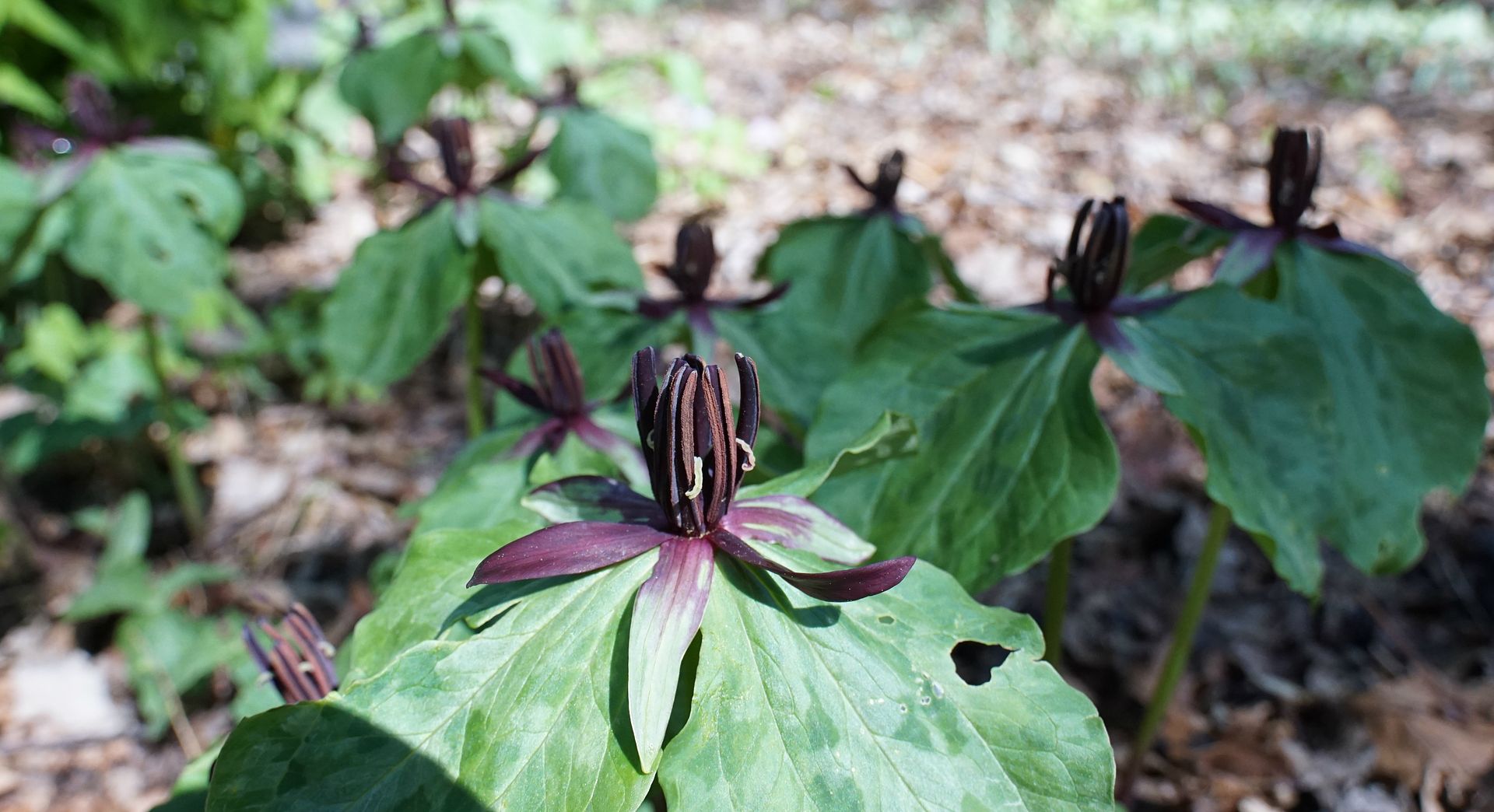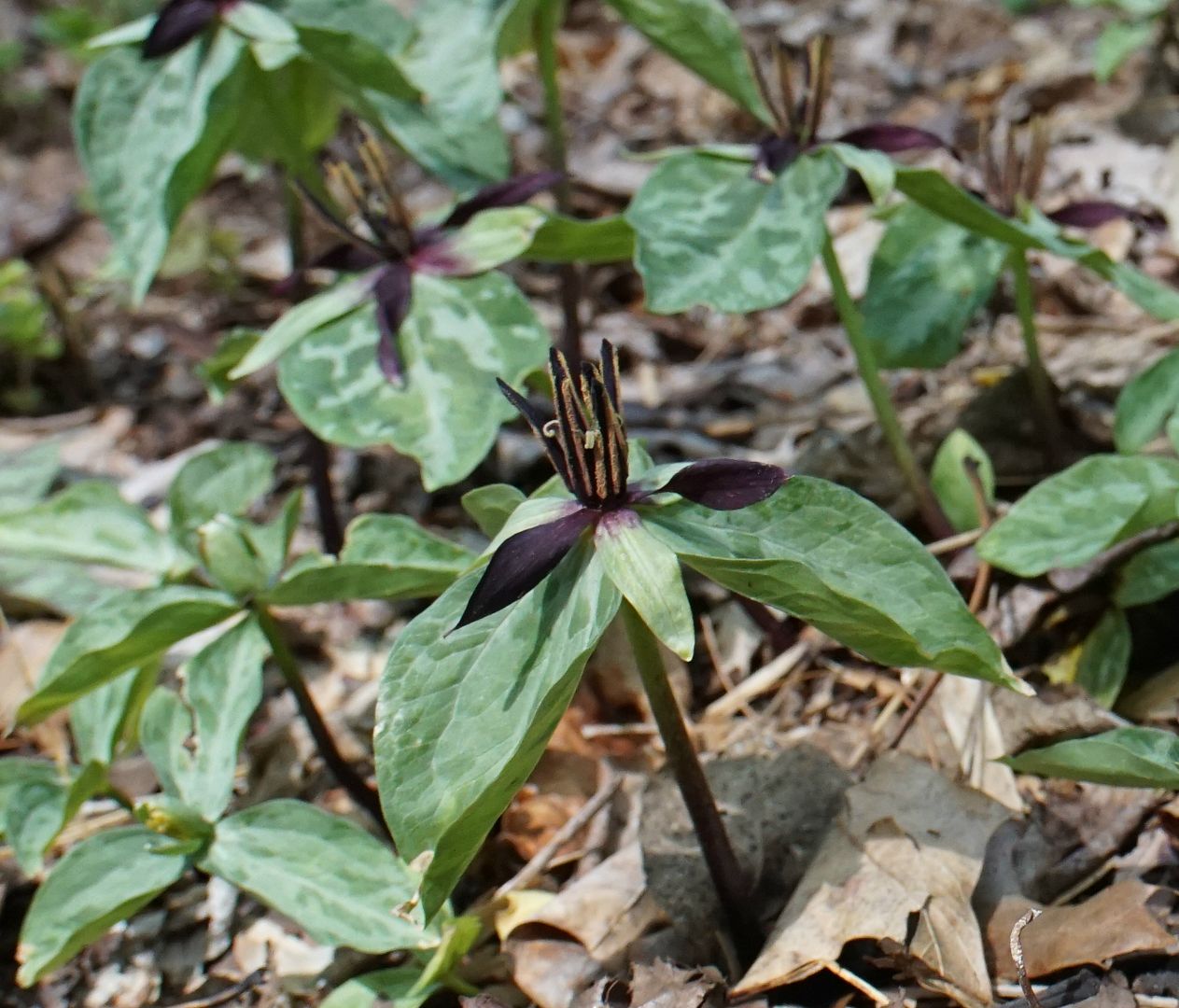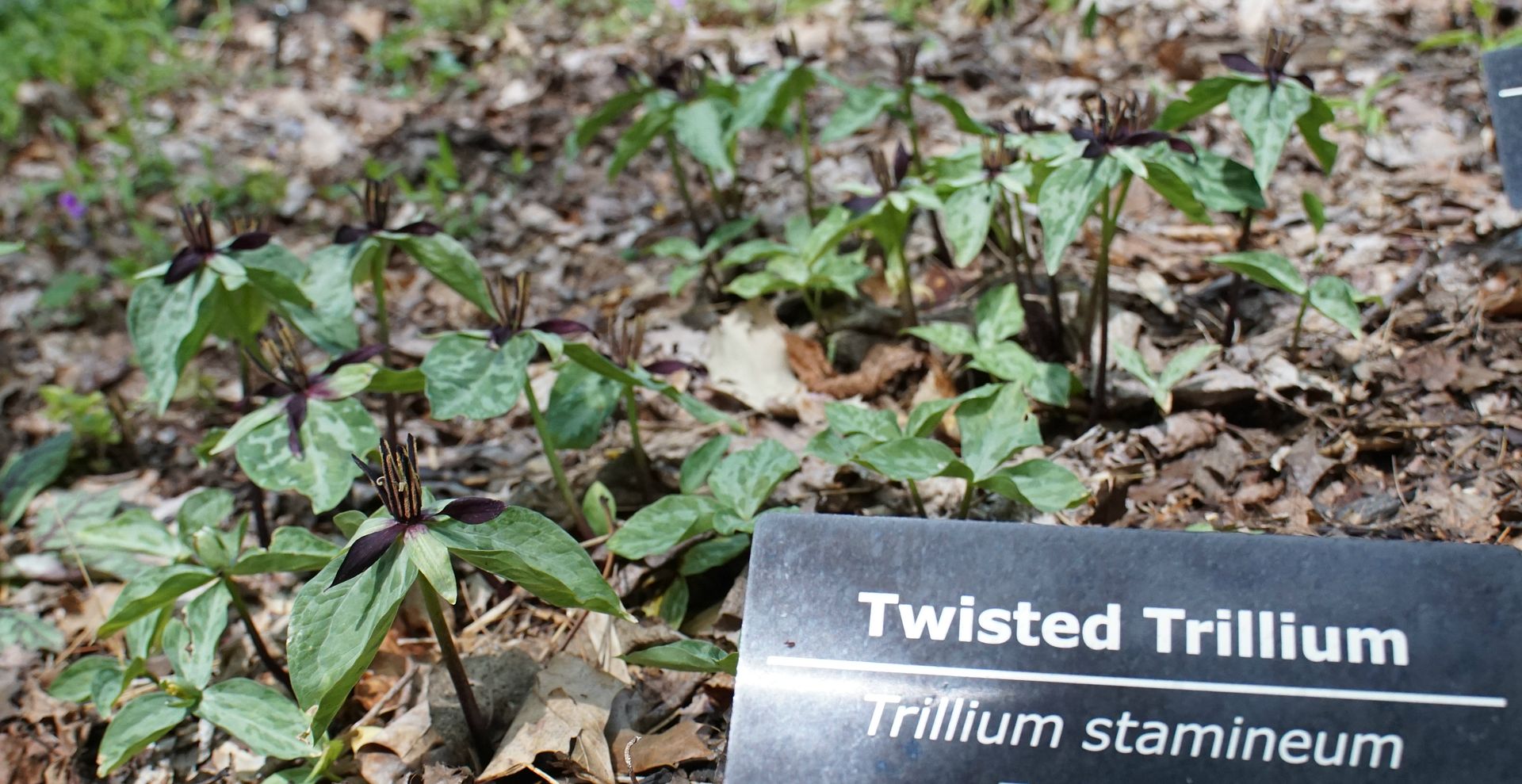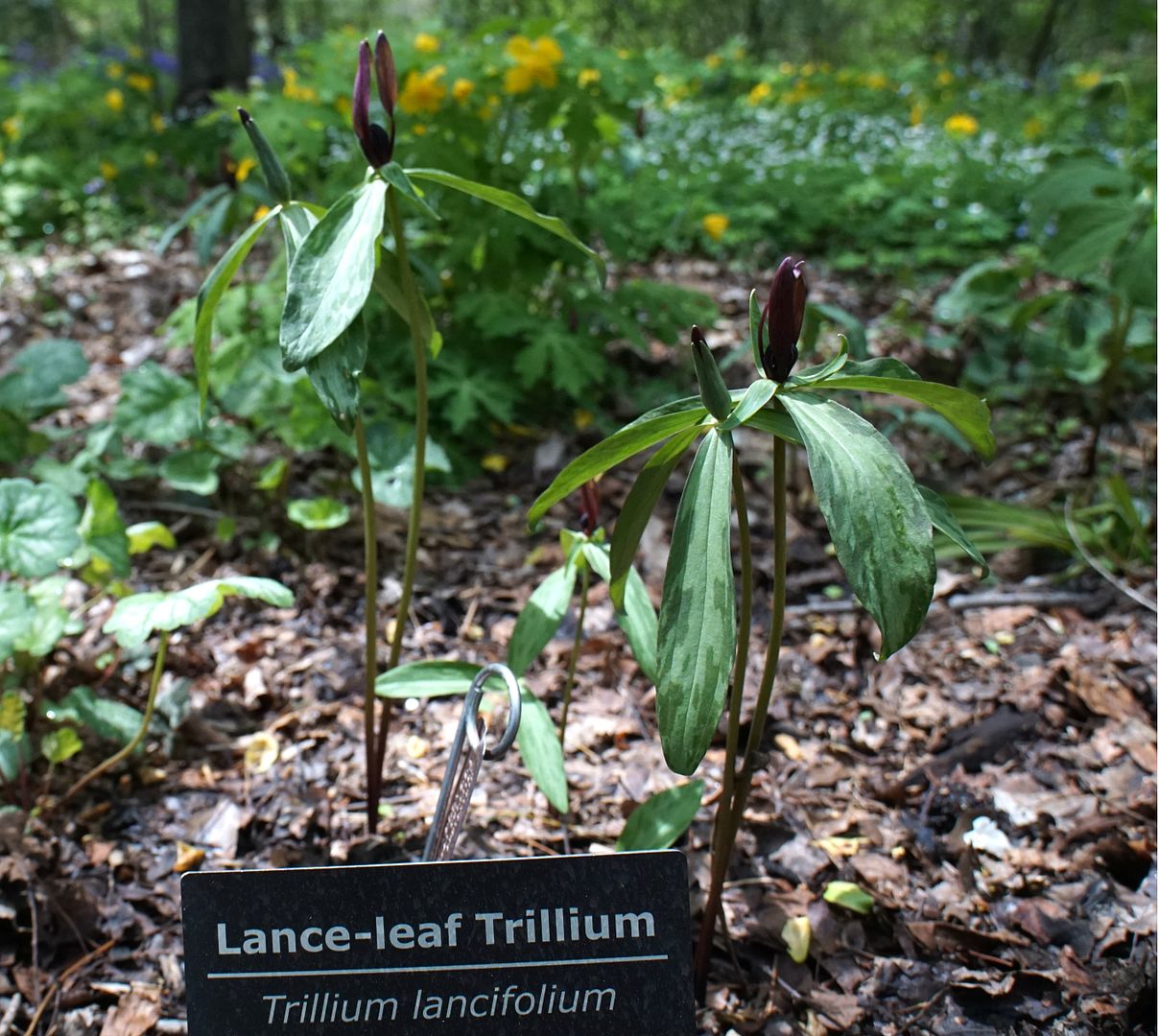Plants are triggered to flower from a lot of different things. Some are slowed down dramatically by the cold or rain, while others don't care at all. Lots of little factors can throw off the blooming of certain species. So this can all vary form year to year.
Often by the time the Mt. Cuba Center has their Wildflower Celebration plants like Hepatica, Twinleaf, Trout Lily (both white and yellow), Snow Trillium, and Trillium pusillum have all finished flowering. This year, though, these were all flowering, but most of the non Trillium ephemerals hadn't opened as much. Often the forest floor to their woodland gardens are covered by a mixture of Virginia Bluebells, Fernleaf Phacelia, and Woodland Poppy, which all spread almost thuggish in the gardens there.
A few years back all the stars aligned and pretty much every spring ephemeral was in full flower. The Snow Trilliums, Twinleaf, and both Trout Lilies were all bloom in good number along with vast carpets of Phacelia, Bluebells, and Poppies to the point that the forest floor could not be seen. Creeping Phlox, Foam Flower, Bluets, Ragwort, multiple species of Spring Beauty, a variety of trees including Redbud, Witch Hazel, and Dogwoods were all in full bloom as well. And this wasn't just a few patches here and there as it often is; it was everywhere! This was also the year I saw Wild Camassia there, a native bulb no one seems to recall planting and have either died out or been removed from the gardens since. I have an awful picture of them somewhere so I know I'm not crazy but none of the gardeners there seem to recall the species ever having been planted. (It was likely removed because Camassia is more of a midwestern plant).
This year's display wasn't as grand as that golden year. It's important to remember this isn't a flower show where plants are grown and timed in green houses and planted at the moment of perfection. These are plants left to grow in the ground all year so their flowering is largely effected by the weather. I would never say it was a disappointment to go. There are always tons of wildflowers in bloom just not in abundance throughout the gardens. And as always it's worth going for the Trilliums alone.
So here are a few highlights that I enjoyed seeing.
And Red! I've always found it odd how plants with colors in the name often aren't that color. I don't know what cultivar this is but it's certainly a centerpiece. Beside it is a Dogwood, Cornus florida. It's a good combination but I feel like the red version Cornus rubra, or Native Wisteria Vine (not grown on the tree!) would make for a better pop of color.
Cornus florida have deceptive flowers. All the flowers in this photo actually aren't open yet. Those greed buds in the center here are actually the flower which will have tube-shaped petals. Surrounding them are white colored bracts, which are modified leaves designed to draw attention to the flowers instead of photosynthesize.
Rhododendron vaseyi. Normally I don't go for Rhododendrons but this one was a cute color. They're very sparse with flowers compared to other species though. Normally I gush over Flame Azalea, Rhododendron calendulaceum, and their bright orange flowers but I don't think any were flowering there yet.
Fernleaf Phacelia, Phacelia bipinnatifida. The Mt. Cuba Center is where I first learned about this plant and I've wanted it ever since. Who knew an aggressive spreading, biannual, that's swarming with pollinators, and turns forest floors into cloudy carpets of purple would be such a tough sell to the nursery industry. No one sells this species except for one awful nursery online that only sells it in bare root form, and the occasional native plant sale. I have to drive all the way to Delaware to a place just down the street from the Mt. Cuba Center to buy this plant and hope and pray that it reseeds itself in my yard. Please someone, just sell the seeds to this plant online.
This was an awful year for Bluets too!
I won't pretend to know anything about growing these or how they manage the moss patch at the Mt. Cuba Center. But in years past the whole moss patch was glowing thick with Houstonia caerulea. This year it was mostly just this one sliver of the patch in flower.
I've tried to grow these too and they're tough to establish. The roots are extremely tiny and prone to drying out or rotting away or getting eaten. Everyone who sells them gives me conflicting reports. Dry shade, full sun, damp moss but only on a hill with well drained soil? It's confusing.
I'm reasonably sure the Mt. Cuba Center occasionally harvests the plants from the patch to use elsewhere in the garden. I've started seeing them growing in patches along the pond and in other moss rich parts of the garden.
Yellow Lady Slipper, Cypripedium pubescens. One of our rare native orchids. Well, more uncommon. They tend to only grow where trees have fallen in the woods and certain types of beneficial fungi have taken root first.
Wild Geranium, Geranium maculatum.
Virginia Bluebells, Mertensia virginica. Both the typical blue form that is so common and a very rare red form. Normally these start to open up red and quickly change to blue when they fully open. The flowers stay that way a few days before falling off. With the red form though the flowers never turn blue.
The Mt. Cuba Center also has a white form which has spread a bit since I first saw it there. The red form is still just that single stalk but the white here were pushing out a dozen or more.
Both fall in comparison to the blue which I've seen dominated the forest floor in years past.
Turkey Corn, Dicentra eximia.
Iris spp.
Trout Lily, Erythronium americanum. While I don't always see this plant blooming at the Mt. Cuba Center every year, when I do see them I normally see it flowering in large patches. This year though this one plant was the only one I noticed... odd.
Trout Lilies are notorious for not flowering though. They spend too much time spreading by horizontal roots to form new bulbs. Each bulb then works on sending roots deeper in the ground but they only flower after reaching a certain depth, which can take forever. The result is a huge patch of leaves but no flowers every year. I'm told though that planting them in pots or adding stones a few inches under the bulbs will help stress the plant into putting its energy into flowering. I have yet to try this trick out.
Swamp Pink, Helonias bullata. This is an endangered species I'm happy to see they still have there. On some years they have a dozen or so plants all blooming around the ponds but this year I only noticed this one.
Some nurseries have found out how to germinate this species in captivity and are making it commercially available. I've tried to grow it in my gardens though but found it too finicky to survive here. I suspect it's not drought tolerant at all and requires constant moisture year round which I wasn't able to give them.
Trillium grandiflorum.
After flowering for just shy of a week the flowers turn pink and eventually go full magenta before they finish flowering.
When grown in mass they put on quite a show. All the white flowers look great growing together and then a week later you're treated to all the varying shades pink, red, magenta and so on.
The Mt. Cuba Center has a whole garden featuring hybrids and unusual cultivars. Here is a red form of T. grandiflorum. Instead of opening white they open up red and stay that way the whole time they're flowering.
Same plants but in slightly different light.
Trillium erectum is normally red as seen in the background here. This clump though was mostly a white form of the plant.
Trillium simile has always been a favorite of mine. The dark center sets it apart from the similar looking Trillium flexipies. I've been meaning to commission this flower into a piece of jewelry; a button or pendant perhaps?
Here they are growing in mass. Sadly unlike T. grandiflorum I think the petals just fall off instead of change color.
Trillium pusillum. Normally this one is finished flowering by the time the Wildflower Celebration is held each year. Even this one is past its prime. They do open white but turn pink before the petals fall off.
Despite having all the fun qualities of T. grandiflorum this plant doesn't create such a sweeping effect. They're much smaller plants and the flowers are no where near as large.
Oddly enough after the petals fall off the three leaves just underneath give the effect that they have green petals.
Twisted Trillium, Trillium stamineum.
This is a fun one that's really easy to identify because the petals twist around.
I've been wanting to grow this in my garden for a number of years but no one seems to sell it online.
The Mt. Cuba Center makes growing this plant look easy because they seem to have a lot of it. Just down the road there's a farm that holds a native plant sale every year and I've seen plants provided by the Mt. Cuba Center sold there before. There was a sign for this species there but sadly they were sold out by the time I noticed it.
Trillium lancifolium. I've seen commercially available before but not often. It gets its name from the petals being so erect up into the air like a series of lances aimed up high.
Trillium oostingii. An odd species I only ever see there.
They had tons more Trilliums and variations there of growing in their gardens but I wasn't able to photograph it all as I've done on years past.

